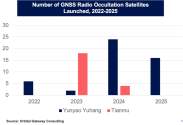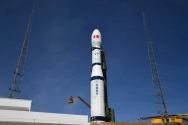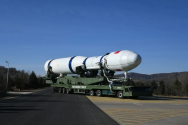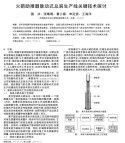That launchpad is another massive massive waste.LM-8 has its own launchpad at Wenchang, the other projects do not.
We had official confirmation of the plans in 2023, but do you think that said plans weren't talked and discussed in private much earlier? Factories capable of producing 50 rockets a year are not cheap and talks and plans must have started much earlier than 2023.they talked about 50 LM8 rockets in May, 2023 not in 2021..
It will be a lot sooner I think, if the private companies get the resources they need. SpaceX has already paved the way after all.A reusable rocket hasn't yet flown to orbit, and it will take whichever company first achieved that many years to scale up to 1/week cadence.
Yes. It's not out of the question, just accept that the LM-8 got fucked by the timing and that it will never achieve more than a handful of launches and don't waste billions on new production lines that would be stranded assets in a few years. The CZ-9 basically got a completely new design from the ground up after all, the people in charge of the program were smart enough to know that by the time the original design of the CZ-9 entered service, it would be obsolete in the face of Starship, hence basically throwing years worth of development down the drain and starting from scratch. And the CZ-9 was quite far along in development, the YF-130 was having hot fire tests, components like the fuel tank were already built. All the work being put into the YF-130, completely wasted. But a good thing in the long run, they knew to cut their losses and pivot instead of wasting more money and development time on a lost clause.Even besides that, are you arguing that the LM8 facilities shouldn't have been built at all?
The other option would be to do what the CZ-9 did and have a redesign to make the rocket reusable. Push the maiden launch back a few years. At least the CZ-8 would still be able to re-use it's engines, fairing and fuel tanks. The CZ-12 had it's maiden flight as an expandable rocket but it's being redesigned to be reusable, just as an example.
I want you to use your brain and think. Reusable rockets landing is just a bonus. A very nice bonus, but just a bonus. Even if the reusable rockets do take years to perfect their landing and refurbishment process, they are still perfectly capable of launching payloads as an expandable rockets, the same as the LM8. The F9 spent years acting as an expandable rocket after all, and still manage to take over much of the American launch market without reuse.If they put all the eggs in your reusable private launchers basket, they'd be doing nothing in the meantime other than sitting around and waiting for the dream to be realized. Better to simultaneously invest in LM8+reusable.
Do you do understand the scale of what's coming? There's something like 15 private rocket companies operating right now. 7 of them are planning to launch their first F9 clones this year. The other 8 will likely be launching in 2026 or 2027. Most of the 7 are planning to launch more then once this year, and being F9 clones, most of the new rockets are capable of >15 tons to LEO, far more powerful than the LM-8. They don't have to be reusable at all and the flood of new private rockets will still start putting pressure on the LM-8 launches. And if a handful of those companies do quickly achieve reusability, that will just greatly accelerate things. Even this year, 2025, where LM-8 is finally starting to scale up production, it's still gonna be start getting squeezed out by the private companies even if none of them manage to land their rockets and next year will be a hundred times worse. Again, wasted assets. What's the point having the production capacity of dozens of LM-8 when they are coming online in the same timeframe where the private sector are also ramping up to dozens of launches? And all those private rockets will eventually become reusable, while the LM-8 will forever remain expandable.
Sure, this increase in private launches is due to the sheer amount of companies launching 2-3 times instead of a handful of strong companies launching a dozen times each, but the end result is that unless something goes very wrong, the amount of launches by the private companies's F9 clones will still greatly exceed the amount of LM-8 launches this year and even more next year, even if they all keep failing their landings. And even as expandable rockets, all of them are designed to become eventually reusable, some of them will achieve it on their 2nd or 3rd try, some would take many more, unlike the LM-8 that will never be reusable without a redesign of the rocket. So it's important for the private companies to launch as quickly and often as possible, every launch gives them valuable data and practise.
And here's the other major issues. Launchpads. The LM-8 has an entire launchpad reserved for it in the wenchang commercial launchsite. Meanwhile all 7 private companies that are launching their first F9 clones this year, are all having to fight for the singular commerical launchsite left. Said launchpad can handle 16 launches a year. 7 companies, 16 launches a year. Do you understand the issue? And that's 2025, 2026 will see even more launches by the private sector. Commerical launch pad 3&4 won't be operational until 2027. And again, reusable rockets have to launch often to become reusable, they need data and experince that can only comes from frequent launches.
Can you imagine a strong talented company that has the rockets ready, but the waitlist for the single commercial launchsite means that instead of launching every 2-3 months as they naturally could if they had freely available launchpad access, they have to wait 9 months between launches due to a long waitlist? Can you imagine how much this will slow the entire private sector and reusability? Sure they have inland launch sites, but that's sub-optimal, especially for reusability and there's the hassle of transporting the rockets inland when most of the F9 clones are bigger than the standard 3.35 meter diameter that will allow them to be transported by rail. I will add that the LM-8 does have a 3.35 meter diameter core that allows it to be transported inland by rail, so one wonders why it has an entire valuable coastal launchpad reserved for it.
And again, this could easily have been foreseen. The people in charge could have easily seen even back in 2020 that the ramp up in LM-8 production would be starting in 2024/2025 and that all the private companies would be maturing and starting to launch en masse around the same time and even state owned reusable programs would be starting to take shape too. This is billions of rmb worth of money we're talking about, having those new LM-8 factories active for 2-3 years at best is not worth it, that's a whole of money being wasted. Not to mention the issues of having the LM-8 hogging an entire launchpad for itself.
I would have no issues with the LM-8 if it started scaling up by the dozens of launches in 2021/2022/2023 and taking over the older hypergolic rockets back when all the private companies were still years away from scaling up too, but it literally started scaling up on the same year where the private sector are also planning more than a dozen launches of their (eventually) reusable rockets is peak comedy. If the private companies can pump out dozens of launches, even without reuse, just based on the sheer amount of companies trying to break into the sector, what's the point of scaling up production of the the LM-8? And once the private or state sector does figure out reuse, it's completely over for any expandable rocket currently in service. Once again, the Chinese rocket industry just can't stop fucking up. In an ideal world, all those billions of rmb used for the new LM-8 production lines would have been used for building more coastal launchsites and supporting reusable rocket development.
Last edited:













